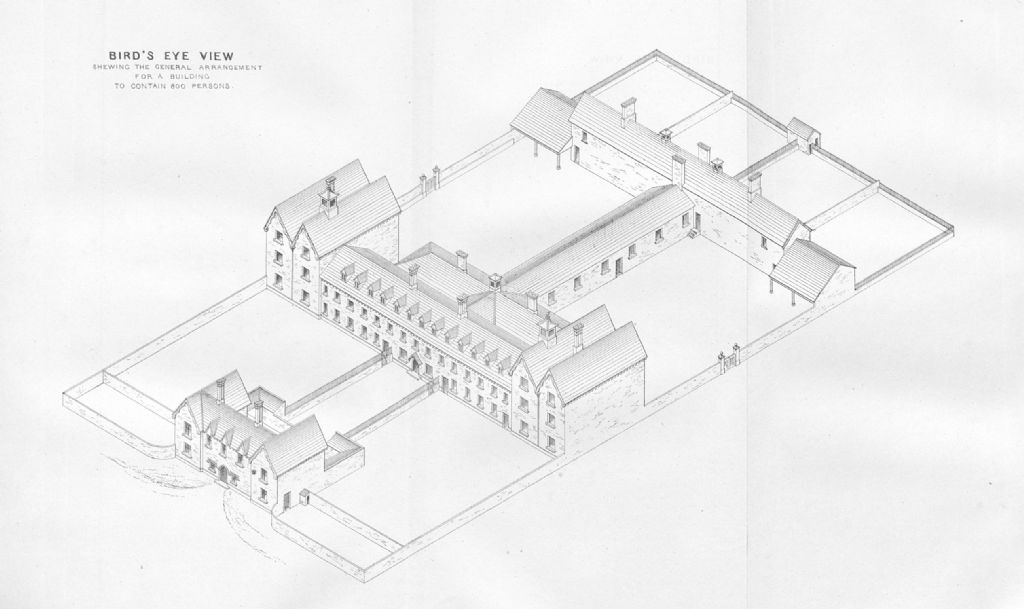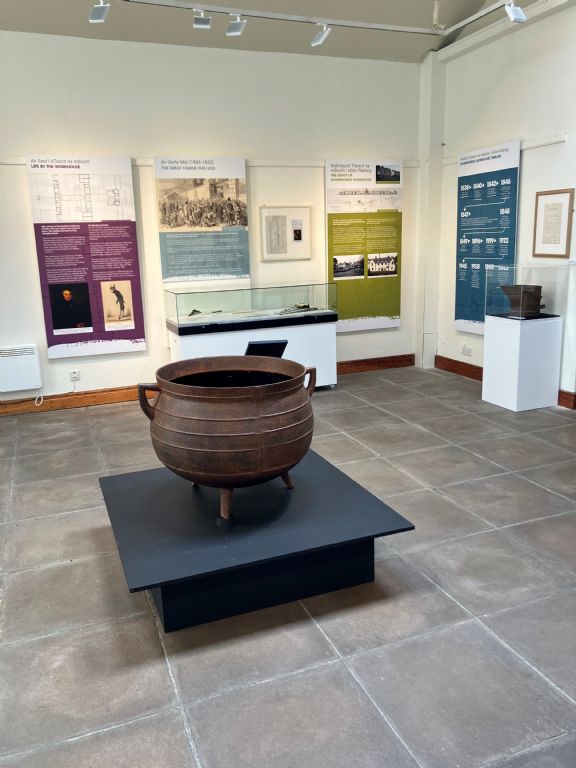Downpatrick Difficult Past Explored Through New Workhouse Exhibition at Down County Museum
A new exhibition at Down County Museum explores the complex history of Downpatrick Workhouse on Strangford Road, which closed 80 years ago this year.
The exhibition will be open to the public from Friday 30 May until the end of November and will explore the harsh realities faced by residents who entered its doors through the artefacts and objects on display, including a famine pot, documents, architectural drawings and plans.
The Downpatrick workhouse admitted the first paupers on 17 September 1842 and continued to operate until 1945. Construction of the workshouse began in 1840 following the ‘Act for the More Effectual Relief of the Destitute Poor (1838)’, also known as the ‘Irish Poor Laws’. Outdoor relief such as soup kitchens stopped and the poor now only received support within the workhouse.
Newry, Mourne and Down District Council Chairperson, Councillor Pete Byrne, said, “This exhibition is a powerful reminder of a harsher time in Downpatrick’s past and will be a valuable resource for those interested in the history and built heritage of our area”.
Curator of the Down County Museum, Dr Kris Reid said, "The story of Downpatrick workhouse is one we are privileged to share at the Museum. We hope visitors will gain an insight into this particularly challenging period in our history and take the opportunity to see objects from the original workhouse complex."
The design of the Irish workhouse aimed to discourage as many as possible from seeking refuge there. Nicholls’ 1838 report summed up the challenge, “The standard of their mode of living is unhappily so low that the establishment of one still lower is difficult.”
All 130 workhouses built in Ireland followed a design by George Wilkinson, a 25-year-old English architect. The brief for the workhouses required that they be, “of the cheapest description compatible with durability.” They were a third less expensive than English workhouses while still meeting the requirements for segregation by sex and age.
Admission is free to Down County Museum, which opens from Tuesday – Saturday, 10am-4.30pm throughout the summer.










